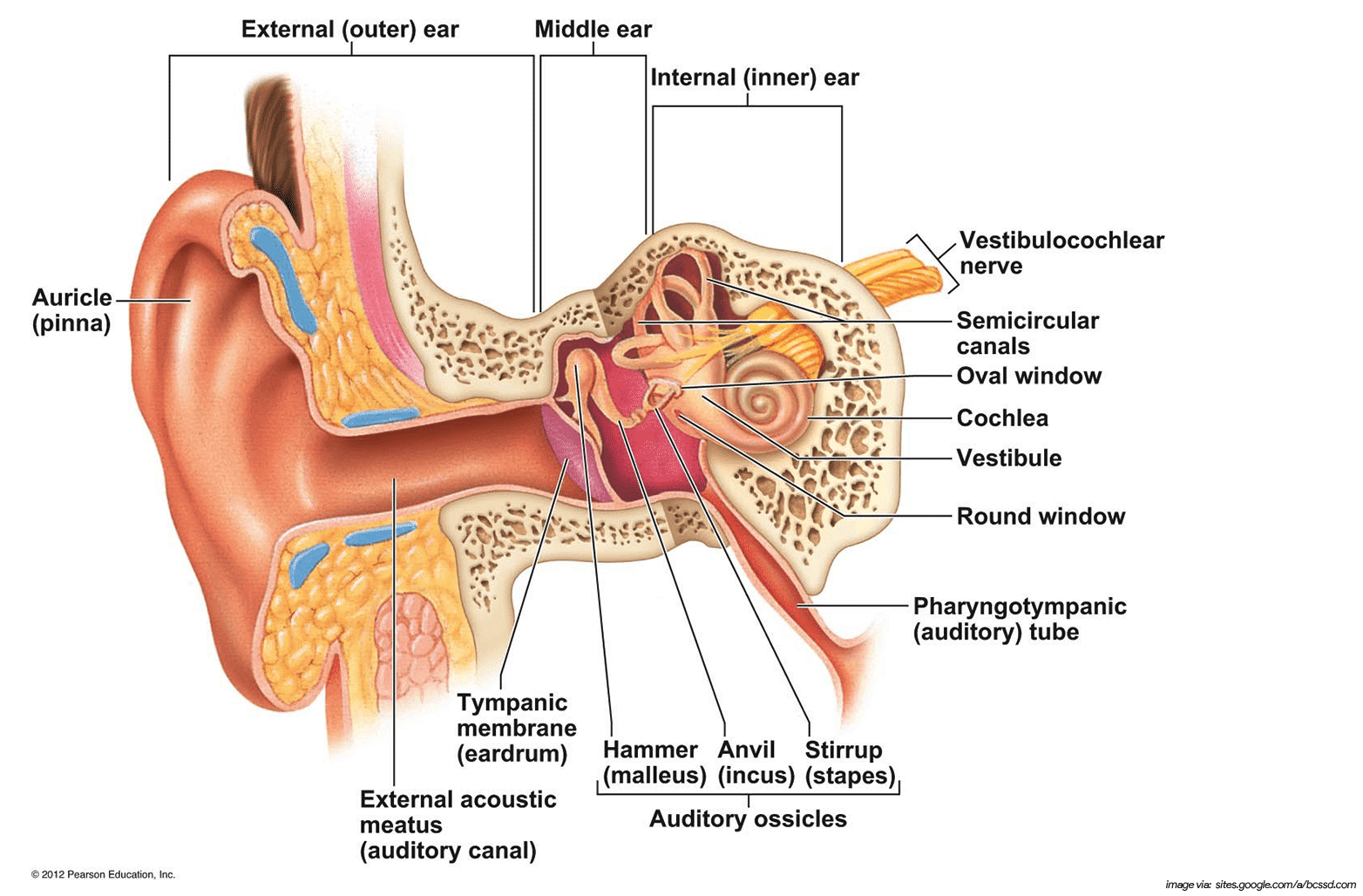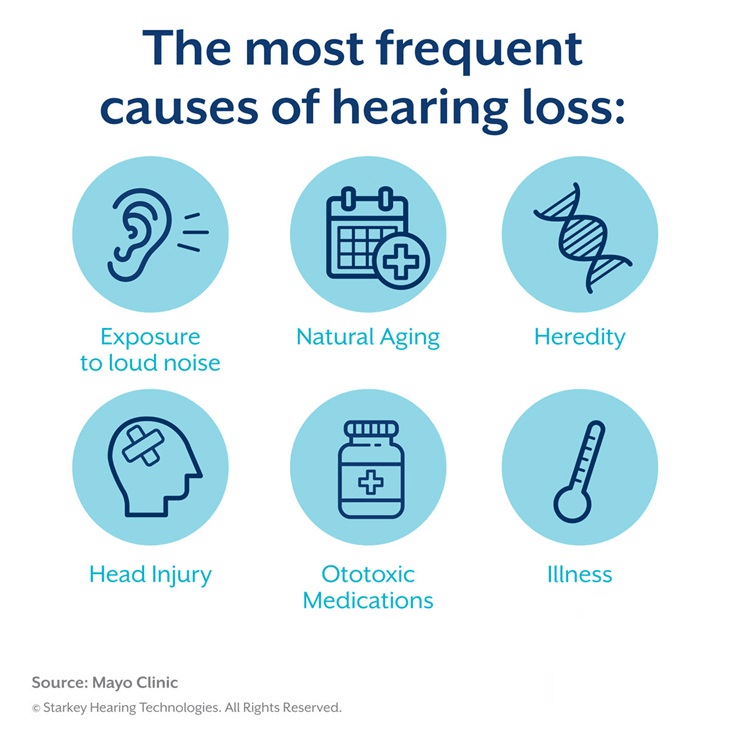Hearing Loss Overview
Of all our five senses, hearing loss is perhaps the most complicated and least understood.
Even though our hearing works so hard for us and we rely on it so heavily, most of us do not fully understand it. In order to fully understand hearing loss and how it can affect our lives, we must first understand how healthy hearing operates.

How do we hear?
Our auditory system is such an advanced biological process, as so much must occur in milliseconds in order for us to understand and react to what we hear around us. To hear, the following steps must occur:
- Sound waves are collected by our outer ear and travel down the ear canal to the ear drum.
- These sound waves cause the ear drum and three tiny bones, called the ossicles, in our middle ear to vibrate.
- These vibrations cause a special fluid located in the spiral shaped cochlea to also ripple and vibrate.
- While moving and waving along with the fluid, tiny hair-like cells, called stereocilia, bend and sway. With this motion, these hair cells transmit the vibrations into electrical signals.
- These electrical signals are then sent through the auditory nerve for processing.
- The brain finally receives the electrical signals and interprets them into noises that we can recognize and understand as sound.
When Hearing is Damaged

Sensorineural Hearing Loss
Because sensorineural hearing loss accounts for a very large majority of hearing loss cases, it is important to have a better understanding of this type. As mentioned above, sensorineural hearing loss occurs when there is damage to the tiny and delicate hair cells in our inner ear that are responsible for transmitting sound waves into electrical signals our brains can recognize.
The two most common causes of this type of hearing loss are natural aging and excess exposure to noise. Hearing loss caused by natural aging is also called presbycusis. As we grow older, the delicate hair cells in our inner ear become damaged and less active. When damaged, these hair cells are less able to transmit sound waves into signals our brains can understand.
Causes of Sensorineural Hearing Loss
Noise exposure is the most common cause of sensorineural hearing loss. Noise induced hearing loss (or NIHL) can affect anyone at any age and typically occurs over a prolonged period of time. Over months, years or even decades, loud noises cause similar damage to the delicate hair cells as presbycusis. Unfortunately, exposure to even a single loud noise, such as an explosion, can also cause NIHL. Similar to presbycusis, the damage to these delicate hair cells causes irreversible hearing loss.
Treatment for Sensorineural Hearing Loss
Sensorineural hearing loss is typically permanent, and there currently is not a cure for it. Instead, treatment options such as the use of hearing aids are typically very successful in helping to amplify sounds in the environment not otherwise detectable to individuals with lost hearing.

